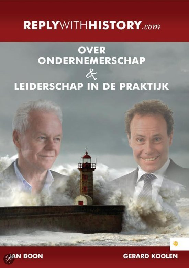71. Innovation in the genes

Dear Gerard
Until now, the way you organized your innovation process worked well. By controlling the innovation at the top of your organization you were able to coordinate the process well. A problem can arise when your business grows. How are you going to develop the process then? My son will soon be graduating from the University of Amsterdam (Information Science). This study focuses on the area between business and operational processes and specific software and IT companies. His thesis will be on an IT company which is active in the logistics and food sector. They have to implement a system so that all processes are more manageable.The IT specialists and consultants seem to operate more or less independently of each other at this company. Obviously, the management will have to control the projects and make the business more professionally. The innovation issue also needs to be implemented here. The central question is how to link the different projects in progress and how to manage the key information of a project and make this available for other projects which have the same problems. Customers’ wishes and questions also have to be addressed. The problem is that this type of information is not easy to model. This also applies to innovation issues: all project managers and account managers in your organization who are involved at the larger clients or projects should be programmed to develop the project further. In other words, in the genes of a healthy modern business, innovation must be present. Here again, how can you structure and model it adequately? I’m curious about the outcome and I’ll keep you posted.
It was announced today that the first Dutch astronaut in space has died. He was launched into space with the Challenger shuttle in 1985. The same Challenger exploded after its next launch, killing seven astronauts. The astronaut, Wubbo Ockels, the first professor in the field of innovation and sustainability in the Netherlands and perhaps in the world, was a great advocate of innovation and sustainability in society. He led a university team that developed a car that runs on solar power, which won the World Solar Challenge several times. He was a very special person who thought in terms of solutions and not problems. He also tried alternative methods to cure his illness, renal cell cancer, and refused to use to traditional health methods. But this was a battle he could not win. We must apply his ideas: a positive lifestyle and incorporate innovation and sustainability in the companies of tomorrow.
Regards,
Jan Stam












Leave a Reply